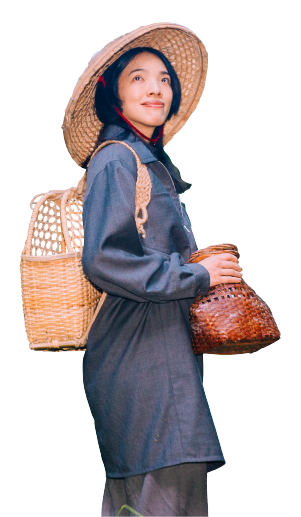Adoor Yeh
Taiwan cartoonist
Author of the single-issue comic Taskun Mudaan (Walk Together)
A lover of manga, anime, and documentaries
A fervent researcher who immerses herself in historical documents when encountering unfamiliar issues
Seemingly chivalrous on the outside, yet is as approachable as the girl next door


As a kid who grew up in Taipei, I have met several of my elementary school classmates and part-time job colleagues who had an indigenous background. In fact, I would not have known that if they had not declared their identities. In recent years, I begin to switch my focus to the creation of a state. To explore the issues about indigenous people’s traditional territories, I approach various advocacy groups who protest on Ketagelan Boulevard in front of the Presidential Office Building. I also draw short comics on some of the related events which are then published in the Creative Comic Collection. In the process of researching, I find a difference in the composition between these indigenous groups and those I have previously encountered, which I never noticed. Perhaps this is because the latter are mostly the urban indigenous who have set their roots in cities for two or three generations. They rarely talk about indigenous issues and are less likely to mention their identities when they first meet. I do not know for sure whether they do so intentionally or it’s because they have not been instilled with the concept of self-identity. But as I delve deeper into this question, I come to realize that such responses are caused by the interplay of a series of social and political factors, including a long history of deliberate differentiation, neglect, and discrimination; the stereotyping of their appearances and personalities; controversial policies such as indigenous students' preferential admissions in higher education, shotgun control, and the recognition of Taiwan indigenous languages. The Non-indigenous people, who introduced the modern concept of “state” when they came into power, have obviously failed to incorporate the indigenous communities, the original masters of this land, as a member of the country despite the fact that they have long lived and developed their distinctive culture here for centuries.
After that, I travel to a Bunun community to study their traditional culture and take part in their local revitalization project, which inspires me to draw on this experience to create the single-issue comic Taskun Mudaan. This experience leads me to understand that indigenous people are no different from most of us in terms of personality. Due to their historical background, they are forcibly characterized by certain personality traits to conform to the general public's stereotype impression, and cases like this are not uncommon. The Taiwan indigenous peoples in my mind are a number of ethnic groups who have their own roots and cultural values deeply connected to this land. Yet in the process of modernization, they are torn apart and forced to leave their ancestral land, struggling to find their way home. Even so, I still choose to refer to them as “masters of the mountains,” because it not only reflects the reality from the past but also expresses my expectation for their future.
 I never had a chance to meet the Taiwan Plains Indigenous Peoples before. To me, they are far more mysterious than those who are initially classified as the Takasago (Mountain Indigenous Peoples) by the Japanese colonizers. My interest in them stems from one time when a relative of mine mentioned that my great-grandmother was an orphan from one of these ethnic groups. But I did not go any further to investigate it since there was no evidence to prove that, and it was only an anecdote among my relatives. As I recall this, it occurs to me that perhaps these peoples are not completely strange to me. Maybe I myself am a descendant of them, and it’s just that I do not know it at all. I used to have only a rudimentary understanding of the Taiwan Plains Indigenous Peoples, which is acquired from the textbook and previous impressions of street name rectification. It is not until I begin to research historical documents in recent years that I realized that many of the “aboriginal women” at that time used to serve as interpreters in important negotiations and meetings.
I never had a chance to meet the Taiwan Plains Indigenous Peoples before. To me, they are far more mysterious than those who are initially classified as the Takasago (Mountain Indigenous Peoples) by the Japanese colonizers. My interest in them stems from one time when a relative of mine mentioned that my great-grandmother was an orphan from one of these ethnic groups. But I did not go any further to investigate it since there was no evidence to prove that, and it was only an anecdote among my relatives. As I recall this, it occurs to me that perhaps these peoples are not completely strange to me. Maybe I myself am a descendant of them, and it’s just that I do not know it at all. I used to have only a rudimentary understanding of the Taiwan Plains Indigenous Peoples, which is acquired from the textbook and previous impressions of street name rectification. It is not until I begin to research historical documents in recent years that I realized that many of the “aboriginal women” at that time used to serve as interpreters in important negotiations and meetings.
Whenever offered a chance to learn about Taiwan indigenous culture, I always consider it a rare and precious experience. This time I am brought on a journey to a brand-new area that I have never explored, both geographically and culturally. I can’t wait to learn about the wisdom of the traditional customs of the Taiwan Plain indigenous peoples, especially how their modern descendants manage to preserve and keep alive their ancestral culture to create more collective memories to be shared and passed on by the people of Taiwan. 




